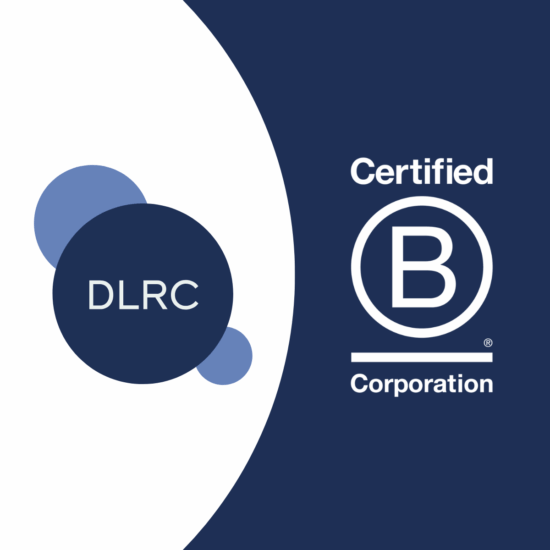Press Release: DLRC Group Becomes a Certified B Corporation
Published Dec 02, 2025
Published 29th May 2025

In today’s increasingly complex medical device regulatory landscape, a well-crafted regulatory strategy is the cornerstone of successful product development and market access. With our collective experience developing regulatory strategies across diverse markets and device types, our team has witnessed firsthand how strategic oversights can lead to promising innovations becoming costly regulatory challenges.
Throughout our practice, we have observed five recurring mistakes that consistently undermine regulatory success, leading to extended development timelines, unexpected costs, and in some cases, complete market access failure. These mistakes are not merely hypothetical concerns but represent real challenges impacting countless medical device projects. This blog will explore these critical errors and provide actionable insights to help you navigate the regulatory pathway more effectively, drawing from real-world experience and proven strategies that can protect your investment and accelerate your path to market.
A regulatory strategy is far more than a compliance checklist; it is a crucial and comprehensive document that serves as the strategic blueprint for your entire medical device development journey. This critical component guides development from initial concept through market launch, outlining all necessary activities to define project timelines and navigate the complex device development process through successful implementation.
An effective regulatory strategy encompasses several core components that work synergistically to create a cohesive roadmap for market access. Strategic market selection and pathway determination form the foundation, identifying target markets and optimal regulatory routes. Product classification ensures accurate categorisation across all intended jurisdictions, while clinical evidence requirements define the data needed to demonstrate safety and efficacy. Quality systems implementation establishes the framework for manufacturing compliance, and a comprehensive risk management approach identifies and mitigates potential hazards throughout the product lifecycle. Finally, post-market surveillance planning ensures ongoing compliance and safety monitoring once the device reaches patients.
These elements must work together seamlessly to create a comprehensive regulatory strategy, which is fundamental to ensuring successful market access. Without this strategic foundation, even the most innovative medical devices can face significant regulatory barriers that prevent them from reaching the patients who need them most.
One of the most significant oversights is when companies fail to prepare a comprehensive regulatory strategy or develop any strategy. This fundamental mistake stems from a false misconception about the complexities of regulatory requirements.
Many companies attempt to navigate regulatory pathways by pulling disparate pieces from different legislation or relying solely on predicate devices, believing this fragmented approach is sufficient to reach the market and satisfy all regulatory requirements. They treat regulatory compliance as a series of isolated checkboxes rather than understanding it as an integrated, strategic process that requires careful planning and coordination across multiple domains.
From our extensive experience, this approach consistently fails, leading to significant problems. The consequences are far-reaching and often substantial: companies encounter numerous unforeseen issues, face considerable potential risks, experience lengthy delays that can span years, and incur long-term cost implications that can threaten the viability of the entire project. Without a comprehensive strategy, organisations lack the roadmap needed to anticipate regulatory challenges, allocate resources effectively, and maintain project momentum through the inevitable complexities of device development.
The reality is that regulatory success requires more than good intentions and basic compliance knowledge—it demands a strategic, holistic approach that considers all aspects of the regulatory landscape from day one.
A particularly significant mistake is treating the regulatory strategy as a one-time deliverable rather than a living, evolving document. Many companies prepare a regulatory strategy once during early development and never update it again, viewing it as a completed milestone rather than an ongoing strategic tool.
This approach represents a significant oversight because the regulatory landscape is inherently dynamic. A regulatory strategy must continuously evolve to remain relevant and effective as circumstances change throughout the product development lifecycle. Regulations undergo regular updates and revisions, requiring strategy adjustments to maintain compliance. As products advance through development phases, new risks emerge, clinical trials reveal unexpected findings, and technical documentation evolves based on design iterations and performance data. Additionally, changes in clinical evaluation methodologies, market requirements, and competitive landscapes all necessitate strategic updates.
The consequences of treating regulatory strategy as a static document are severe and well-documented. We have observed products failing to reach the market entirely due to outdated strategic assumptions, and recalls occurring because regulatory strategies were prepared as a one-off exercise without subsequent review and refinement. These outcomes could have been prevented through regular strategy updates that reflect the current regulatory environment and product status.
A truly effective regulatory strategy must be treated as a living document that grows and adapts alongside your product development, ensuring continued alignment with regulatory requirements and business objectives.
While a regulatory strategy provides an overall plan for complying with regulations and laws, the complexity multiplies exponentially when expanding internationally. An international regulatory strategy must focus specifically on navigating the unique regulations across different countries and regions, yet many companies significantly underestimate this complexity.
Expanding into international markets requires careful consideration of additional regulatory requirements and standards that vary significantly between jurisdictions. Each country or region maintains its own regulatory authority with unique submission processes, documentation requirements, and approval pathways. Success demands thorough research on international regulatory requirements, assessment of additional testing or certification needs, and engagement with local regulatory experts to successfully navigate the complexities of international markets.
The critical mistake we repeatedly observe is companies developing a strategy for the EU or US market and incorrectly assuming it will be acceptable in all other regions. This assumption proves costly and problematic. What should have been completed during initial development—such as specific testing protocols or clinical evidence gathering—must instead be completed retrospectively because global requirements weren’t considered from the outset.
We have witnessed this scenario unfold even within larger companies with substantial resources. The retrospective approach delays market entry and often requires significant additional investment in studies, testing, and documentation that could have been integrated into the original development timeline more efficiently and cost-effectively. The lesson is clear: international expansion requires dedicated strategic planning from the earliest stages of development, not as an afterthought when seeking market access.
Product classification represents one of the most critical yet frequently mishandled aspects of regulatory strategy development. Given the numerous mistakes we have witnessed, the complexity of classification decisions could easily fill an entire book.
Many companies fail to invest adequate time in correctly classifying their products, not fully appreciating that multiple possible classifications may exist for medical devices depending on their intended use, mechanism of action, and risk profile. The consequences of classification errors are particularly severe: companies can spend years developing a product under one classification assumption, for example, as a Class IIa medical device, only to learn after submission that regulatory authorities classify it as a Class III device or determine it is not a medical device at all.
The classification challenge becomes exponentially more complex in international markets. Numerous borderline cases exist throughout the MedTech industry, not just in Europe or the UK, but the complexity intensifies when entering global markets. A product classified as a medical device in the EU might fall under completely different regulatory frameworks in the US or other international markets, potentially shifting from medical device regulations to pharmaceutical, cosmetic, or even dietary supplement oversight.
The most striking example from the experience encountered by our MedTech expert involved a single product that was categorised seven different ways across global markets, ranging from a medicine requiring full pharmaceutical approval to a vitamin supplement with minimal regulatory oversight. This classification variation dramatically impacts development timelines, evidence required, approval pathways, and ultimately, market access strategies. Companies must invest in thorough classification assessment across all target markets from the earliest development stages to avoid costly pivots later in the process.
Minor changes in Intended Use or Indications for Use which can be a change of one word only can completely transform regulatory strategy requirements, yet development teams focused on technical innovation rather than regulatory implications frequently overlook this critical relationship.
Regulations are specifically tailored to a product’s intended use and indications for use, meaning that regulatory pathways, evidence requirements, and approval processes are fundamentally tied to how the device will be used in clinical practice. The regulatory implications can be profound when the intended use evolves, as it often does during development based on clinical findings, market feedback, or competitive considerations.
A medical device designed for one clinical purpose may be subject to entirely different regulatory requirements when adapted for another, potentially more complex application. New applications typically require additional clinical trials to demonstrate safety and efficacy under different circumstances, involving new regulatory submissions and comprehensive assessments by regulatory bodies. The clinical evidence that supported the original intended use may be insufficient or irrelevant for the new application, necessitating substantial additional studies.
Throughout our practice, we have witnessed multiple instances where unassessed changes to Intended Use and indications, without corresponding review and adjustment of the regulatory strategy, have resulted in serious adverse outcomes. Products that showed promise under their original intended use have never reached the market because teams failed to recognise how these changes in the indended use or claims fundamentally altered their regulatory pathway. The lesson is clear: any modification to intended use, regardless of how minor it may seem from a technical perspective, requires immediate regulatory strategy review and potential revision to ensure the continued viability of the market access plan.
With extensive experience developing regulatory strategies across diverse markets and device categories, these five critical mistakes represent the most consistent and damaging patterns our team has observed. The failure to develop comprehensive strategies, treating strategy as static documents, applying one-size-fits-all international approaches, underestimating classification complexity, and overlooking intended use impacts have derailed countless promising medical device projects.
The common thread connecting these mistakes is the underestimation of regulatory complexity and the critical importance of strategic planning from the earliest stages of development. Proper regulatory planning, implemented as a dynamic and comprehensive process, can prevent the delays, cost overruns, and market access failures that plague many medical device companies.
A comprehensive, living regulatory strategy that evolves with your product and market requirements is not merely a compliance exercise—it is a strategic asset that enables innovation to reach patients safely and efficiently. Expert guidance proves essential for navigating these complex regulatory landscapes, ensuring that your innovative solutions can successfully traverse the path from concept to patient care.
The investment in proper regulatory strategy development invariably pays dividends through faster market access, reduced development risks, and ultimately, the successful delivery of innovative medical technologies to the patients who need them most.
The solution for medical device companies serious about avoiding these costly mistakes lies in early engagement with regulatory strategy experts who can provide the comprehensive, adaptive approach your innovation deserves. DLRC’s regulatory services are designed to address these challenges, offering the strategic guidance and ongoing support necessary to transform complex regulatory requirements into clear, actionable pathways to market success.
To learn more about how DLRC can support your regulatory strategy needs, contact us at hello@dlrcgroup.com or use the links below.

Published Dec 02, 2025

Published Nov 14, 2025

Published Oct 20, 2025

Published Oct 01, 2025

Published Oct 01, 2025

Published Oct 01, 2025

Published Oct 01, 2025

Published Oct 01, 2025

Published Sep 29, 2025